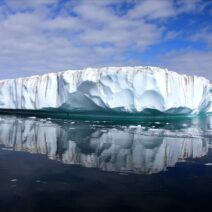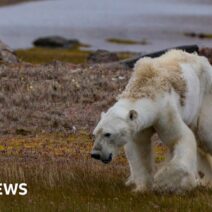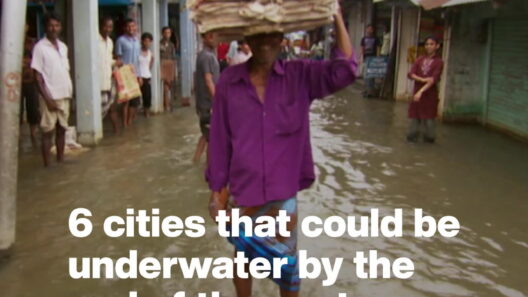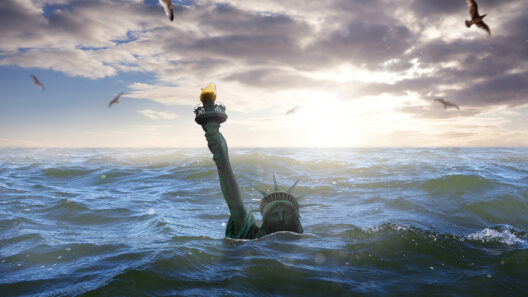As we gaze upon the horizon and see the vast expanse of our oceans, we might wonder, “What secrets lie beneath the surface, and how are they changing in the face of our climate reality?” The urgency to understand how global warming contributes to rising sea levels has never been more imperative. This article strives to unravel the intricate science behind this phenomenon, delving into the mechanics and implications of our warming planet.
The scientific consensus is crystal clear: our planet is heating up. But how does this increase in temperature lead to the formidable rise in sea levels? Two primary processes are at play: thermal expansion of seawater and the melting of glaciers and polar ice caps. Both elements unite, producing a surge in the volume of our oceans.
Let us embark on this exploration into the science behind rising sea levels and the collective challenge that lies ahead in combating climate change.
The Enigmatic Concept of Thermal Expansion
The oceans are vast reservoirs of heat. As global temperatures soar, the seawater absorbs this excess heat, causing the water molecules to vibrate more vigorously. This increased kinetic energy results in thermal expansion, which essentially means that as water heats up, it occupies more space. The phenomenon resembles that of a balloon; as air is added, it expands. According to recent studies, thermal expansion has already contributed significantly to rising sea levels. In fact, since the late 19th century, thermal expansion has been responsible for approximately half of the observed sea level rise.
Investigating this further, it’s crucial to note that different bodies of water will react differently to the rise in temperatures due to varying salinity and other factors. As water continues to warm, we must confront the uncomfortable truth that places like coastal cities are in the crosshairs of rising waters, facing the possibility of chronic inundation.
The Melting Ice Caps: A Tipping Point
As we shift our focus from warm waters to cold glaciers, the connection between global warming and rising sea levels becomes even more pronounced. The polar ice caps and glaciers worldwide serve as the planet’s cryosphere, storing colossal amounts of freshwater. However, as average temperatures rise, these ice reserves melt at an alarming rate.
The Greenland Ice Sheet and the Antarctic Ice Sheet are particularly noteworthy. The instability of these ice masses is staggering—data shows that Greenland alone has experienced a significant decline, losing approximately 280 billion tons of ice annually. When this ice melts, it directly adds freshwater to the oceans. In stark contrast, the melting of glaciers in places like the Himalayas, Andes, and Rockies further exacerbates the situation, contributing to the relentless rise of sea levels.
Yet, even as we confront these overwhelming statistics, the downhill trend is not set in stone. The potential for climate action and sustainable practices remains a beacon of hope—can technology guide us in reversing these processes, or are we on an uncontrollable slide toward a submerged future?
Feedback Loops: A Cautionary Tale
As the climate system is intricately interconnected, the phenomenon of feedback loops emerges as a critical area of concern. One key feedback loop involves the loss of reflectivity. As ice melts, darker ocean waters emerge, which absorb more sunlight and further heat the oceans, leading to additional thermal expansion and subsequent ice melt. This cycle can create an accelerating trajectory of rising sea levels, and once triggered, it may be challenging to halt.
The implications of these feedback loops are profound. Coastal habitats, ecosystems, and human settlements could face unparalleled risks, from increased flooding to the salinization of freshwater resources. The prospect of losing not only habitats but entire communities presents a formidable challenge—how do we balance the scales of progress and preservation in the face of nature’s impending changes?
The Societal Impact of Rising Seas
The ramifications of rising sea levels will not simply be confined to environmental shifts. Entire populations may find themselves displaced due to what is being called “climate migration.” This mass movement will place an increased burden on urban centers, infrastructure, and international relations—submerging coastal cities could lead to socioeconomic turmoil and inequality. Vulnerable communities often bear the brunt of climate change, exacerbating existing disparities.
International cooperation and innovative solutions are paramount. Globally, nations must come together to curb greenhouse gas emissions, promote renewable energy, and invest in sustainable infrastructure. Simultaneously, local governments need to pursue adaptation strategies, such as building resilient coastlines, restoring natural buffers like mangroves and wetlands, and identifying safe evacuation routes to protect a populace increasingly threatened by rising tides.
A Call to Action
The intricate science behind rising sea levels reveals a complex web of processes fueled by climate change. Thermal expansion and melting ice sheets interlace to create a formidable challenge, but the narrative is not purely pessimistic. Human ingenuity and resilience can bend the arc of this trajectory towards sustainability and adaptation.
As we ponder the question of what our oceans will look like in the coming decades, we must galvanize our efforts toward collective responsibility. The rising seas prompt not only scientific inquiry but active participation in the preservation of our planet. Will we rise to the occasion and seize this challenge, or will the tide of inaction carry us away?







